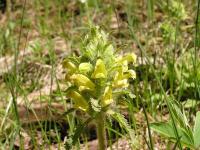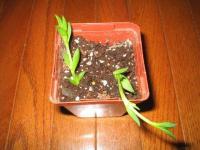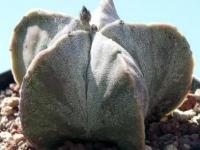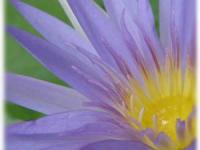Perilla frutescens
Habitat
Annual herb of the mint family native to E. Asia, it is a traditional crop of China, India, Japan, Korea, Thailand, and other Asian countries. Perilla was brought to the United States in the late 1800s by Asian immigrants. It has quickly naturalized and become a common weed of pastures and roadsides in the southeastern United States. Found growing in sunny open fields, roadsides, waste places and open woodlands. Cultivation is very easy Perilla prefers light to medium moist well-drained and rich soil in full sun. Perilla is a very attractive plant for the garden and attracts butterflies. It’s deep purple stems and purple to red tinted leaves last all summer and fall. It is a very aromatic plant, with a strong minty smell. Growing up to 4 feet tall when in bloom, the stems are square, reddish-purple and branching. The leaves are large, up to 6 in. in diameter, petioled, opposite, ovate and serrate, edges ruffled or curly, dark green tinted red to purple (especially on the underside) and hairy. Sometimes the leaves are so large and red that they remind one of a slice of raw beef, hence the name beefsteak plant. The flower spikes are long, up to 10 in. and born in the leaf axils. Flowers are small about 1/4-inch long and tubular, pink to lavender and numerous. After blooming from July to October, they leave their calyx on the spike to cover the seed pod, shake the dry seed stalks and it rattles like a rattlesnake. That's how the plant got one of its common names (rattlesnake weed). Perilla is often confused with purple Basil and used for the same purposes. Gather the edible tender leaves from the plant tops anytime. Gather entire plant in bloom and dry for later use.
Properties
Perilla is edible and medicinal. The leaves have a very pleasant sweet taste and are used as a spice, cooked as potherbs or fried, and combined with fish, rice, vegetables and soups. It is also chopped and combined with gingerroot, then added to stir-fries, tempuras and salads in many Asian countries. The plant also supplies a nutritious cooking oil from the seed, as well as giving color and flavor to many pickled dishes. In the United States the essential oil of the plant is used as a food flavoring in candies and sauces. It is used as a flavoring in dental products and at one time, it was one of the main ingredients in sarsaparilla. The entire plant is very nutritious, packed with vitamins and minerals, and one of the aldehyde isomers found in Perilla is 2,000 times as sweet as sugar. There are many scientifically proven medicinal uses for Perilla. It has been used for centuries in Oriental medicine as an antiasthmatic, antibacterial, antidote, antimicrobial, antipyretic, antiseptic, antispasmodic, antitussive, aromatic, carminative, diaphoretic, emollient, expectorant, pectoral, restorative, stomachic and tonic. The plant constituents confirm these uses in alternative medicine and ongoing studies have revealed that this plant is useful in curing many cancers as well as various other diseases and disorders. Further research has isolated such constituents as apigenin, ascorbic-acid, beta-carotene, caffeic-acid, citral, dillapiol, elemicin, limonene, luteolin, myristicin, perillaldehyde, protocatechuic-acid, quercetin, rosmarinic-acid, and more, to numerous to mention. It is a pungent, aromatic, warming herb. An infusion of the plant is useful in the treatment of asthma, colds, cough and lung afflictions, influenza prevention, nausea, vomiting, abdominal pain, constipation, food poisoning and allergic reactions (especially from seafood), and to restore health and balance. The stems are a traditional Chinese remedy for morning sickness and restless fetus in pregnancy, though some say the herb should be avoided by pregnant women. Perilla seed oil has been used in paints, varnishes, linoleum, printing ink, lacquers, and for protective waterproof coatings on cloth. Volatile oils of the plant are also used in aroma therapy and for perfume. The seed heads can be collected and dried for use in arrangements, potpourris and wreaths. The crushed plant also makes an effective insecticide.
Folklore
In Asia, centuries ago, ceremonies were conducted before harvesting the plant, it was considered to be alive and was held as sacred, sent by God as food and medicine to treat all ailments of man. Disrespect for the plant meant death, anyone caught stepping on the plant would himself be trampled to death!
Recipe
"Medicinal" tea: To ¼ cup dry herb add 1 pint of boiling water, allow to steep 10 to 15 min. Drink throughout the day for colds, flu, sore throat, and congestion. Also can be boiled and the steam inhaled to clear the sinuses. You can also grind up the seeds and it makes a wonderful seasoning.
- Brand WSF

Item is shipped out within 3 business days.
Exchanges are accepted but not returns.


































